When Do Kids Shoe Sizes Change to Adult Sizes in Australia? (And What to Buy Before)
Why don't kids' and adult shoe sizes align? Discover the surprising differences between children's and adult shoe sizes.
Updated September 25, 2025
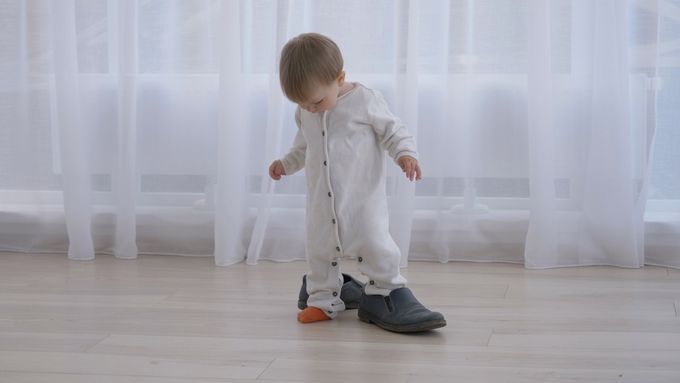
Buying shoes seems straightforward, right? You spot an adorable miniature version of an adult shoe and assume it'll fit perfectly. But children’s shoe sizing works differently.
As an Australian company specialising in podiatrist-designed orthopaedic shoes, we're here to clear up the confusion and help you prepare for the biggest transition in children's footwear.
We’ll explain when kids shoe sizes change to adult sizes and clear up common questions so you can shop with confidence.
Kid vs. Adult Shoe Sizes: What's the Difference?
Don’t assume your child’s size is just a smaller version of yours. Kids’ and adults’ shoes are built differently, which is why size conversion charts exist. They help show how children’s measurements line up with adult sizes and highlight the unique design features of each.
Shape and Support
They're typically narrower and shorter, reflecting growing feet's natural shape and growth.
They're crafted to provide flexibility and support during critical developmental stages, ensuring the foot develops naturally without restriction.
Growth Allowance
Unlike adult shoes, children's footwear is designed with room for growth. Many styles include extra space or adjustable features to ensure a comfortable fit as children quickly outgrow their shoes.
The Magic Number: When Do Kids Shoe Sizes Change to Adult Sizes? (UK/AU/US)
The transition from children’s to adult sizes usually happens after size 13, which moves into an adult size 1. This shift often comes between ages 8 and 12, though every child is different.
Following size 13, the next size is an adult size 1. This system is consistent across the UK, US, and Australian sizing charts. Most children reach this milestone between the ages of 8 and 12, though this can vary significantly based on their individual growth rate.
Whether your child is a size 5 or approaching that size 1 transition, proper support is vital.
How to Calculate Your Kid's Shoe Size
The best way to get the right fit is to measure your child’s foot and then check the brand’s chart. Many brands provide conversion guides that map kids’ sizes to adult ones, so you can see exactly where your child falls.
Here's how to do it:
Trace Your Child's Foot: Have your little one stand on a piece of paper and trace their foot.
Measure: Measure from the back of the heel to the tip of the longest toe.
Check the Size Chart: Look up the size chart for the shoe brand you're eyeing. Match the length you measured to the shoe size on the chart.
Pro Tip for Accurate Sizing
Feet tend to swell slightly as the day progresses, so afternoon or evening shopping can provide a more accurate fit, ensuring the shoes aren't too tight when your child is most active.
Podiatrist-Approved Features: What to Look for in Orthopaedic Shoes
Not all shoes are created equal, especially when it comes to a child's footwear before and during the size transition. Choosing the right features is critical for long-term foot health.
Support: Look for shoes with a balance of robust structure and flexibility. This includes gentle arch support, flexible soles (allowing natural movement), and wide toe boxes that allow toes to spread naturally.
Materials: Breathable materials like quality leather or mesh help prevent moisture and keep little feet comfortable during active play, preventing issues like fungal infections.
Closures: Sneakers with Velcro straps, elastic laces, and adjustable features are non-negotiable, as they can accommodate different foot shapes, volume changes, and provide a more customised, secure fit.
Ready to Step Up? Find Your Child’s Perfect Orthopaedic Fit Today
Ultimately, the right shoe can significantly impact a child's comfort, posture, and development. For your little one, we recommend exploring the First Walkers range.
Our innovative footwear goes beyond fashion, offering solutions that truly understand and support the unique journey of growing feet. Our shoes are developed by our team in collaboration with paediatric specialists; they are genuinely supportive.
You can be confident that your little adventurer is supported in every activity with:
Adjustable closures to accommodate rapid growth.
Shock-absorbing technology to protect developing joints.
Durability-tested materials to withstand the rough-and-tumble world of active children.
| Children's Size Range (Approx.) | Transition Size | Adult Size Range (Start) |
|---|---|---|
| Infant/Toddler (e.g., Size 0 to Size 8) | Size 13 (Largest Kids Size) | Size 1 (Smallest Adult Size) |
| Young Child (e.g., Size 9 to Size 13) | N/A | N/A |
Disclaimer: First Walkers' information is intended for educational and informational purposes related to toddler footwear and feet. We encourage you to consider individual circumstances and consult qualified orthopaedists about specific conditions.
FAQs
At what age do kids start wearing adult size shoes?
Most kids reach adult shoe sizes between ages 12–14, though it can happen earlier or later depending on growth.
Should I buy kids shoes a size bigger?
No. Shoes should fit properly; buying too big can cause tripping or foot issues. Leave about a thumb’s width of room for growth.
What's the best time of day to measure feet?
Measure feet in the late afternoon or evening, when they’re at their largest from daily activity.
What time do boys' feet stop growing?
On average, boys’ feet stop growing around age 16, though some continue until about 18.
Does weight affect foot size?
Yes. Extra weight can widen feet and flatten arches over time, which may change shoe size.
Is a kids’ size 5 the same as an adult size?
A kids’ 5 often lines up with a women’s 6.5 or 7, but not with a men’s 5. It’s always best to check the chart.
Is youth size the same as men’s?
A youth size 7 usually equals a men’s 7 in length, but the fit can feel narrower.
Related Articles
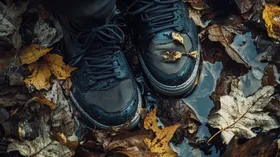
10 Best High Top Shoes for Boys for Ankle Stability and Strength
Bhashwati Deb Barma
December 5, 2024
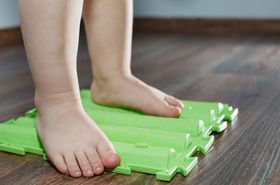
What to Look for in Orthopedic Shoes for Children
First Walkers
June 10, 2025
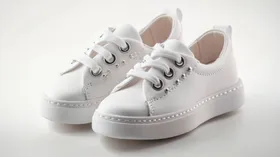
6 Stylish White Children Shoes to Complete Any Outfit
Jasrah Javed
December 6, 2024
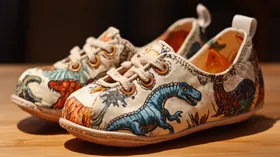
Roar-Some Style: 4 Dinosaur Kids' Shoes for Your Little Explorer
Babafemi Adebajo
December 5, 2024

Common Reasons a Baby's Foot Turns Out and What Parents Should Know
Dr Alisha Lodha
October 28, 2025
Related Posts
Nitisha Sethi
How Does Sizing for Children’s Shoes Work?
Babafemi Adebajo